I wrote up the following journal during a weeklong bushcraft course I taught during the summer of 1999. Although it’s been on our site, it’s never been published here. Going through it has been a lot of fun for me. Hopefully you’ll feel the same after reading it.
——————————————————————–
The purpose of the Basic Wilderness Skills class is to take a person with limited experience in fending for themselves in the outdoors and introduce them to techniques that will lead them on the path toward self-sufficiency. This article will attempt to give the reader insight into some of what takes place by reviewing events from a recent class.
The first day began with a demonstration of the making of a fire by friction bow drill set and its use, followed by the students making a set of their own. Two of the students, who had previously worked with the bow-drill, were soon cranking out coals with their newly made sets. The third student, a woman who had no experience with the bow drill, took another day and a half to get her first fire, which is still rather fast. As an instructor, this was especially gratifying because she had spoken with me before the class about occasional bouts of low energy. It was a testament to her determination that she succeeded in making her first friction fire in such a short time.
On the second day of class we wandered around the farm, discussing the different types of natural shelters the landscape had given us to analyze. We spent several hours examining the various shelters built by the apprentices, and critiqued them according to the scientific principles of energy transfer. In the afternoon, we constructed both an insulated A-frame and a dome as a group despite the oppressive heat. Upon completion of the shelter projects, we took a walk in the woods to identify plants, tracks, and whatever else revealed itself to us. It was not the first such walk the class had taken, nor would it be the last, but it was definitely the most memorable. We meandered through the forest examining all sorts of interesting stuff, and soon came to the edge of a field. We walked out into the field a short distance, examining the differences between the woodland flora and that which grew in the open field. One of the students then pointed out a Screech owl sitting about forty feet above the ground on a branch. We all stopped and looked at it. It returned our gaze, and soon leapt into the air and flew off into the forest. When we looked more closely at the branch, we noticed that there was another owl still on the branch. We made our way back into the woods until we were almost directly under the owl, where we had a great view of it. While we stared at it, it stared at us. I wondered who was more curious, the owl or us?
After about fifteen minutes, the owl flew off in the opposite direction its partner had flown. We continued on our way, walking down a mossy slope to a small creek that ran through the forest. On the bank of the creek the recent activity of the area was there for us to see in the form of tracks in the wet earth. A mother raccoon had brought her three babies to the water’s edge, showing them how to gather food from the creek. The youngsters had followed closely behind their mother, and had been well behaved while mom showed them how to catch dinner. Although we only saw their tracks, we knew that it had happened this way because the three sets of tiny prints showed no signs of playing or running around; they came to the edge of the creek, stopped to watch, then followed their mother away when the lesson was over. In addition to the raccoon tracks, we saw where two different deer had come up to the creek, drank, then crossed and continued on their way.
We left the creek behind and traveled up the mossy slope. At the top we stopped in a small clearing. One of the students leaned against a dead White Pine tree. Then we all heard a “WHOOSH” and saw a blur of brown fly past us. The owl we were watching earlier had been sitting in this dead tree, but none of us had noticed it. It had left its perch, descended to gather speed, then flown off into the forest, flying just a few feet over the head of one of the students. That student held up his arm for the rest of us to see, with a smile breaking across his face. His arm was spotted with owl scat. The owl had defecated as it had flown over him, leaving its calling card on his arm. I thought to myself that there aren’t many places where something like this brings a smile to the face of the person who had been marked in such a manner.
The third day was slated for a morning tracking workshop. When I awoke to another day of intense heat, I decided to slightly alter the plans for the morning, choosing to move the tracking workshop to a nearby beach where we could utilize the ideal tracking medium of wet sand and enjoy the cool waters of the Gulf of Maine as well. After a discussion and demonstration of tracking basics, gait patterns, etc., we broke up into teams and played a tracking game. The game consisted of one team making tracks while the other teams turned their backs. Then the other teams had to determine what had happened by studying the tracks. We did such things as walking backwards, hopping on one foot, changing speeds, and more to try to confuse the other teams. Everyone enjoyed the playful atmosphere of the lesson, and it was especially nice to be in the cool ocean breeze. The remainder of the afternoon was spent working on cordage and fire.
The next morning we were up early and on the road, heading for the primitive camp located an hour north in the mountains. The hike in took us a bit over an hour and a half. We made numerous stops to point out plants, tracks, and other things of interest to the forest-dweller. After the hike up the side of the mountain, the stream felt wonderful as it cooled us from inside and out. We stowed our gear, then began gathering materials for a friction fire. I explained to the students that since we had been working on fire for the previous three days, I would only act in the capacity of a participant, not an instructor. Thus, I would do whatever they told me, including spinning the drill to the best of my ability, but they would have to tell me what to do; they would have to be the decision makers. We had passed some goldenrod stalks in a nearby clearing, which we went off to examine at the insistence of the students. They were a bit narrow in diameter, but they had some potential. As we were sitting in the small clearing, storm clouds were both building and blowing over the mountain. We felt the impending rain, and made our way back to the campsite. After setting up a tarp to shield us from the worst of the weather, I went about gathering leaf-litter for my bed as I had no blanket or sleeping bag. After I gathered significant pile, the students caught on and began to do likewise. It was not as critical for them, though, as two had brought sleeping bags and one brought a blanket. It wasn’t long before the rain clouds began drop their burden upon the land, soaking the forest floor and eliminating the possibility of gathering any more dry leaves. As we sat under the tarp, I talked about how the rain was great teacher, discussing again the methods of energy transfer and finishing with why it was advantageous for us to remain under cover and conserve our energy rather than go about in the rain, getting wet and eventually cold from wet clothes.. We spent the evening enjoying each other’s conpany, and playing a game in which we tried to identify wild edibles based on their verbal description.
Morning came early after a night of rain. We had all fared well, except for the young man who had slept with a blanket; he complained of being cold and not getting much sleep. Since we hadn’t had a fire the night before, the students were motivated to have a fire this morning, both for warmth and to cook a bannock I had brought. We set out for a nearby stand of cedar trees in order to gather fireboards and whatever else the forest had to offer us. Along the way, we identified some burdock stalks that would make good hand drill stalks. We planned on stopping and getting them on the way back, which we later did.
When we reached the stand of cedar trees, we gathered a bunch of dead, dry, lower branches for fireboards. Scraping the outer layers told us that the rain the night before had only given them a superficial wetting,. While among the cedars, we spotted several large pieces of Inonotus Obliquus, the true tinder fungus that grows on birch trees. It is reputed to grow on Aspen trees as well, but I have never witnessed this first hand. We gathered the fungus, and soon came upon a small swampy area full of cattails. Feeling the pangs of hunger, we harvested several cattails and ate the female flower heads, which were enjoyed by all. We searched for a good hand drill stalk among the cattails, but couldn’t find one that felt like it wanted to make fire.
The walk back to camp took us past several large white birch trees. We decided that we’d come back to those trees for a lesson on birch bark basketry. When we arrived back at camp, the two who had gone with me on the morning expedition lay down for a bit, relaxing and practicing the survival rule of conservation of energy. While they enjoyed their survival siesta, the other student and I gathered material for a fire and had a lively discussion on cooking in the bush.
Before long, the two nappers were up and helping prepare for a fire. Someone started spinning a recently gathered goldenrod hand drill on a cedar fireboard.
Soon we had a comfortable fire going. The students had utilized the proper method of building a fire with damp materials, concentrating on maximizing the surface area of a given volume of fuel, and keeping the fire supplied with a sufficient amount of fuel. I mixed up the ingredients for the bannock, and we relaxed while the bannock baked. When the bannock was done, we helped ourselves to large portions of it, quelling our hunger. I was reminded of the old adage that there is no sauce like hunger to make food taste great. After another hour spent in and around camp, we packed up and headed back to the truck.
On our way out, we stopped and harvested some birch bark to make baskets with later. I was careful to instruct the students the correct method for gathering the bark, in order to minimize injury to the tree.
When we arrived back at the farm, we went off for a while to gather the remaining materials needed to complete our birch bark baskets; a bendable green stick for the rim, and spruce root for lashing. In short order we all had our materials, and before long everyone had finished their baskets.
The last day of class started with a tracking scenario, where the students used tire tracks, footprints, and other clues to determine what had happened at a certain spot. Using this process of inductive reasoning they examined each of the clues, collectively forming a general picture of the situation. Eventually they were able, as a group, to follow the clues to the vehicle that made the tracks, accumulating large amounts of information about the driver in the process. They were fascinated by their own abilities, unaware that they could learn so much from a few small marks in the ground. After the tracking scenario, we finished up the birch bark baskets, made a rope winch and completed an exercise on knife sharpening. After a short closing talk, the class ended and the students went their separate ways. It had been a good week, full of learning, practicing, and fun. As anyone who teaches in any capacity will agree, I learned as much from the students as they learned from me.

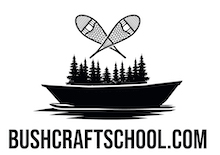

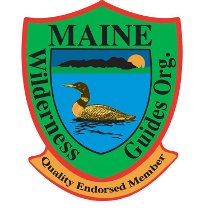
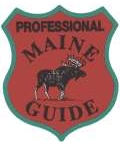
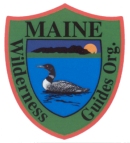
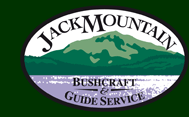

Comments on this entry are closed.
Thanks for sharing. Enjoyed reading it. Nice to read a journal entry through the instructor’s eyes. Great closing statement.
Thanks for sharing. Neat experiences with the owls! Really enjoyed reading a journal entry from the instructor’s point of view. Great closing statement! The students make us better teachers.